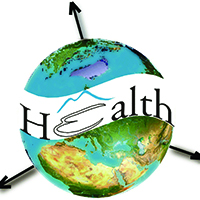There is more to satellite imagery than meets the eye

Published: 31 May 2022
Abstract Views: 2095
PDF: 400
HTML: 19
HTML: 19
Publisher's note
All claims expressed in this article are solely those of the authors and do not necessarily represent those of their affiliated organizations, or those of the publisher, the editors and the reviewers. Any product that may be evaluated in this article or claim that may be made by its manufacturer is not guaranteed or endorsed by the publisher.
All claims expressed in this article are solely those of the authors and do not necessarily represent those of their affiliated organizations, or those of the publisher, the editors and the reviewers. Any product that may be evaluated in this article or claim that may be made by its manufacturer is not guaranteed or endorsed by the publisher.
Similar Articles
- Sumiko Anno, Keiji Imaoka, Takeo Tadono, Tamotsu Igarashi, Subramaniam Sivaganesh, Selvam Kannathasan, Vaithehi Kumaran, Sinnathamby Noble Surendran, Space-time clustering characteristics of dengue based on ecological, socio-economic and demographic factors in northern Sri Lanka , Geospatial Health: Vol. 10 No. 2 (2015)
- Timothy Shields, Jessie Pinchoff, Jailos Lubinda, Harry Hamapumbu, Kelly Searle, Tamaki Kobayashi, Philip E. Thuma, William J. Moss, Frank C. Curriero, Spatial and temporal changes in household structure locations using high-resolution satellite imagery for population assessment: an analysis in southern Zambia, 2006-2011 , Geospatial Health: Vol. 11 No. 2 (2016)
- Nnadozie Onyiri, Estimating malaria burden in Nigeria: a geostatistical modelling approach , Geospatial Health: Vol. 10 No. 2 (2015)
- Moara de Santana Martins Rodgers, Elivelton Fonseca, Prixia del Mar Nieto, John B. Malone, Jeffery C. Luvall, Jennifer C. McCarroll, Ryan Harry Avery, Maria Emilia Bavia, Raul Guimaraes, Xue Wen, Marta Mariana Nascimento Silva, Deborah D.M.T. Carneiro, Luciana Lobato Cardim, Use of soil moisture active passive satellite data and WorldClim 2.0 data to predict the potential distribution of visceral leishmaniasis and its vector Lutzomyia longipalpis in Sao Paulo and Bahia states, Brazil , Geospatial Health: Vol. 17 No. 1 (2022)
- Kelly A. Patyk, Mary J. McCool-Eye, David D. South, Christopher L. Burdett, Susan A. Maroney, Andrew Fox, Grace Kuiper, Sheryl Magzamen, Modelling the domestic poultry population in the United States: A novel approach leveraging remote sensing and synthetic data methods , Geospatial Health: Vol. 15 No. 2 (2020)
- Azizur Rahman, Estimating small area health-related characteristics of populations: a methodological review , Geospatial Health: Vol. 12 No. 1 (2017)
- Samuel F. Atkinson, Abhishek K. Kala, Chetan Tiwari, Cascading effects of COVID-19 on population mobility and air quality: An exploration including place characteristics using geovisualization , Geospatial Health: Vol. 17 No. s1 (2022): Special issue on COVID-19
- Sabelo Nick Dlamini, Jonas Franke, Penelope Vounatsou, Assessing the relationship between environmental factors and malaria vector breeding sites in Swaziland using multi-scale remotely sensed data , Geospatial Health: Vol. 10 No. 1 (2015)
- Vicente Y. Belizario, John Paul Caesar R. delos Trinos, Berne Silawan, Chiqui M. De Veyra, Agapito Hornido, Hansel Amoguis, Dominic Basalo, Cherry Dema-ala, Irenn Mantilla, Rosele Layan, The use of geographic information system as a tool for schistosomiasis surveillance in the province of Davao del Norte, the Philippines , Geospatial Health: Vol. 12 No. 2 (2017)
- Michael T. Gebreslasie, Ides Bauwens, MALAREO: a user-driven project , Geospatial Health: Vol. 10 No. 2 (2015)
<< < 1 2 3 4 5 6 7 8 9 10 > >>
You may also start an advanced similarity search for this article.

 https://doi.org/10.4081/gh.2022.1106
https://doi.org/10.4081/gh.2022.1106





